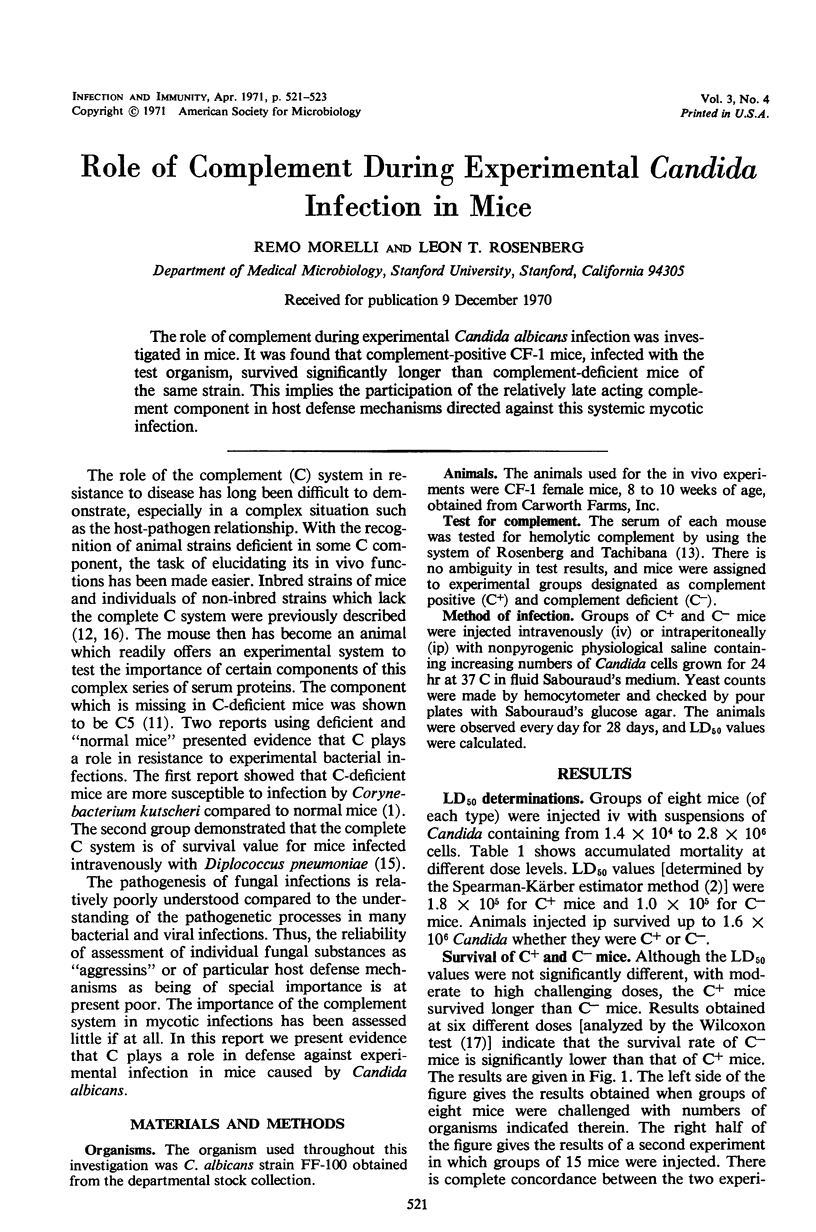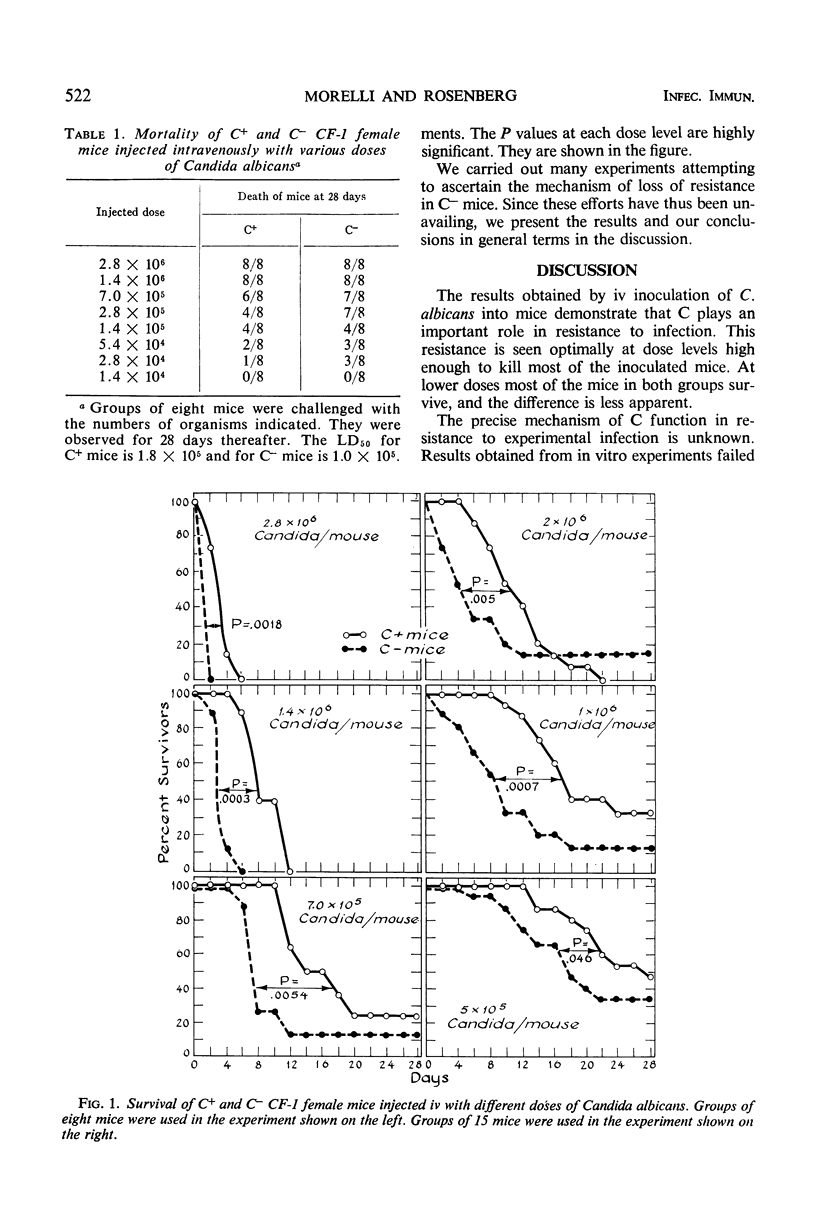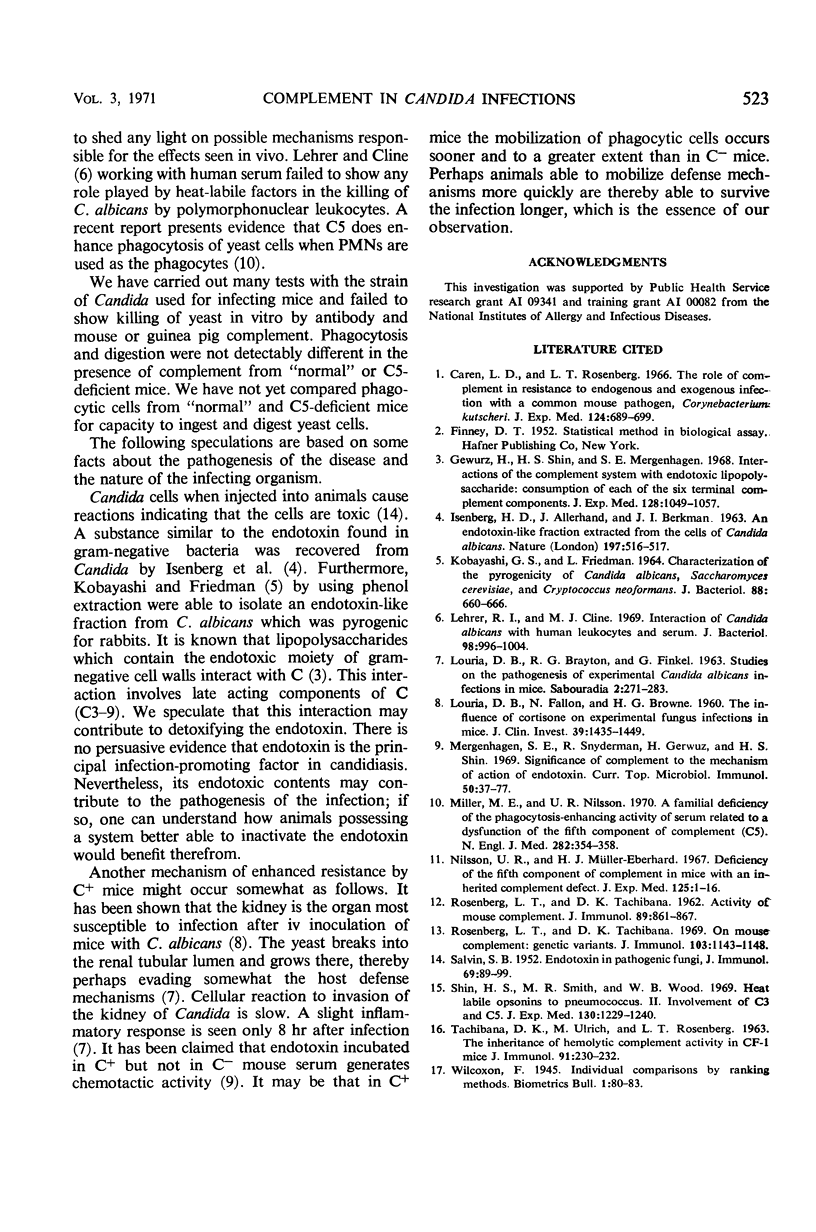Abstract
The role of complement during experimental Candida albicans infection was investigated in mice. It was found that complement-positive CF-1 mice, infected with the test organism, survived significantly longer than complement-deficient mice of the same strain. This implies the participation of the relatively late acting complement component in host defense mechanisms directed against this systemic mycotic infection.
Full text
PDF


Selected References
These references are in PubMed. This may not be the complete list of references from this article.
- Caren L. D., Rosenberg L. T. The role of complement in resistance to endogenous and exogenous infection with a common mouse pathogen, Corynebacterium kutscheri. J Exp Med. 1966 Oct 1;124(4):689–699. doi: 10.1084/jem.124.4.689. [DOI] [PMC free article] [PubMed] [Google Scholar]
- Gewurz H., Shin H. S., Mergenhagen S. E. Interactions of the complement system with endotoxic lipopolysaccharide: consumption of each of the six terminal complement components. J Exp Med. 1968 Nov 1;128(5):1049–1057. doi: 10.1084/jem.128.5.1049. [DOI] [PMC free article] [PubMed] [Google Scholar]
- KOBAYASHI G. S., FRIEDMAN L. CHARACTERIZATION OF THE PYROGENICITY OF CANDIDA ALBICANS, SACCHAROMYCES CEREVISIAE, AND CRYPTOCOCCUS NEOFORMANS. J Bacteriol. 1964 Sep;88:660–666. doi: 10.1128/jb.88.3.660-666.1964. [DOI] [PMC free article] [PubMed] [Google Scholar]
- LOURIA D. B., FALLON N., BROWNE H. G. The influence of cortisone on experimental fungus infections in mice. J Clin Invest. 1960 Sep;39:1435–1449. doi: 10.1172/JCI104163. [DOI] [PMC free article] [PubMed] [Google Scholar]
- Lehrer R. I., Cline M. J. Interaction of Candida albicans with human leukocytes and serum. J Bacteriol. 1969 Jun;98(3):996–1004. doi: 10.1128/jb.98.3.996-1004.1969. [DOI] [PMC free article] [PubMed] [Google Scholar]
- Mergenhagen S. E., Snyderman R., Gewurz H., Shin H. S. Significance of complement to the mechanism of action of endotoxin. Curr Top Microbiol Immunol. 1969;50:37–77. doi: 10.1007/978-3-642-46169-9_2. [DOI] [PubMed] [Google Scholar]
- Miller M. E., Nilsson U. R. A familial deficiency of the phagocytosis-enhancing activity of serum related to a dysfunction of the fifth component of complement (C5). N Engl J Med. 1970 Feb 12;282(7):354–358. doi: 10.1056/NEJM197002122820702. [DOI] [PubMed] [Google Scholar]
- Nilsson U. R., Müller-Eberhard H. J. Deficiency of the fifth component of complement in mice with an inherited complement defect. J Exp Med. 1967 Jan 1;125(1):1–16. doi: 10.1084/jem.125.1.1. [DOI] [PMC free article] [PubMed] [Google Scholar]
- ROSENBERG L. T., TACHIBANA D. K. Activity of mouse complement. J Immunol. 1962 Dec;89:861–867. [PubMed] [Google Scholar]
- Rosenberg L. T., Tachibana D. K. On mouse complement: genetic variants. J Immunol. 1969 Nov;103(5):1143–1148. [PubMed] [Google Scholar]
- SALVIN S. B. Endotoxin in pathogenic q fungi. J Immunol. 1952 Jul;69(1):89–99. [PubMed] [Google Scholar]
- Shin H. S., Smith M. R., Wood W. B., Jr Heat labile opsonins to pneumococcus. II. Involvement of C3 and C5. J Exp Med. 1969 Dec 1;130(6):1229–1241. doi: 10.1084/jem.130.6.1229. [DOI] [PMC free article] [PubMed] [Google Scholar]
- TACHIBANA D. K., ULRICH M., ROSENBERG L. T. THE INHERITANCE OF HEMOLYTIC COMPLEMENT ACTIVITY IN CF-1 MICE. J Immunol. 1963 Aug;91:230–232. [PubMed] [Google Scholar]


